Vintage Bedford horsebox put to an unusual use
Posted by Chris Graham on 23rd May 2024
Mike and Julie Blenkinsop report on another vintage Bedford – this time a horsebox – restored for a second life as a holiday home in France.
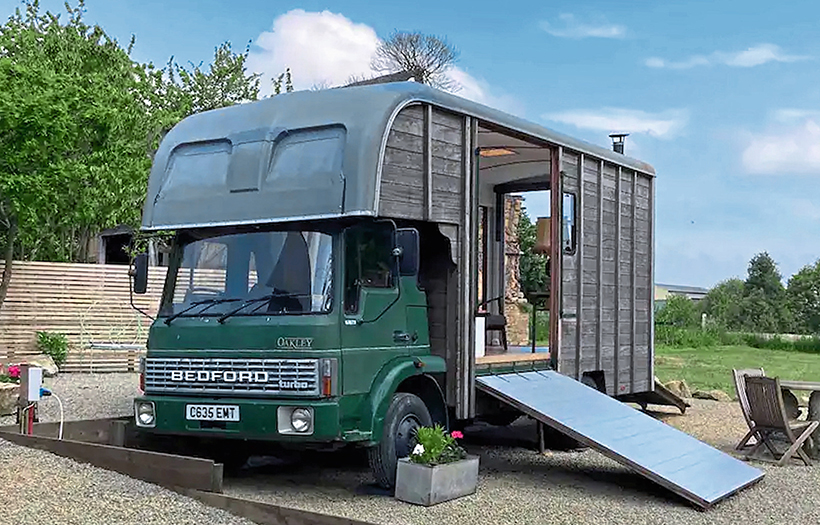
Vintage Bedford horsebox parked in its own space.
You have had enough of the constant slog of day-to-day life and you want more than just a 9-5 existence, so what do you do? Well, Paul Mappley and David Ward were in just that state, so ‘as you do’, they bought themselves a whole French village!
Yes, we can hear you laughing, “it’s OK for some, loads of money, selling up houses in the South of England,” but hold on, know the facts first, it wasn’t quite like that. This was going to be a huge gamble for them and crucially the most important part, is that the whole village cost them a ridiculously low figure and a 1980s lorry was going to help them get there. Their story is an inspiring one.
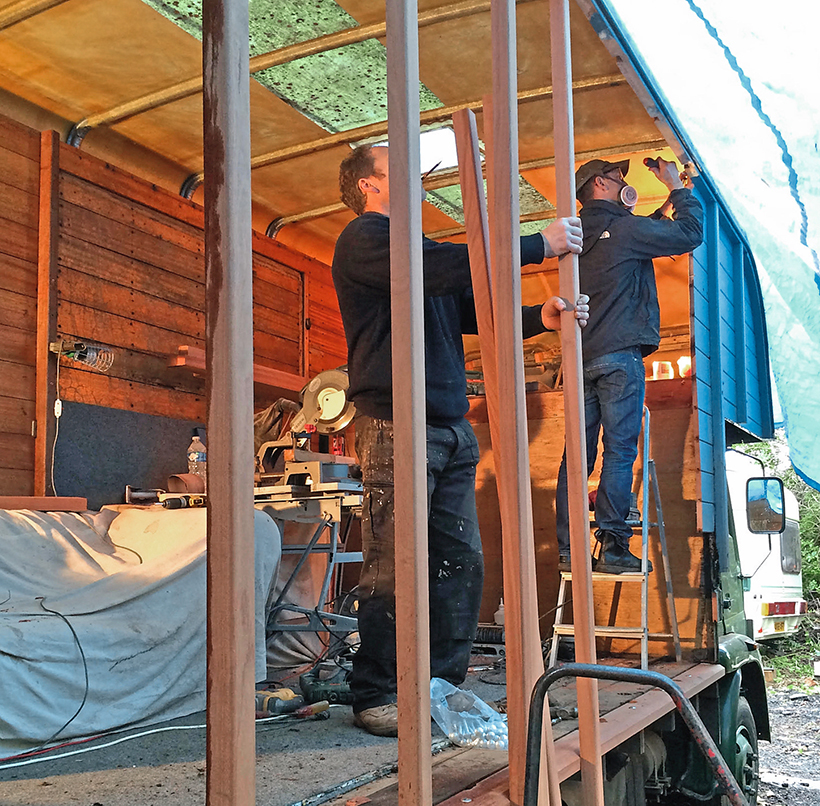
Work starts on replacement of the wood panelling.
In 2014, Paul and his partner David ‘Yip’ Ward from Tunbridge Wells in Kent bought a 1986 Bedford TL 330 from a stable yard in Essex and started a basic motorhome conversion on it to enable them to visit their favourite heritage events; the Great Dorset Steam Fair and the South Cerney Steam Show were particular favourites. They were keen vehicle and heritage enthusiasts so the Bedford would give them their own cheap accommodation on site while there.
They had searched the internet and had come up with a Bedford horsebox, as the cheapest, most suitable vehicle for their needs; C635 EMT was acquired off auction site eBay. Unknowingly at the time, their Oakley-built horsebox body would eventually become an integral part of a much bigger plan.
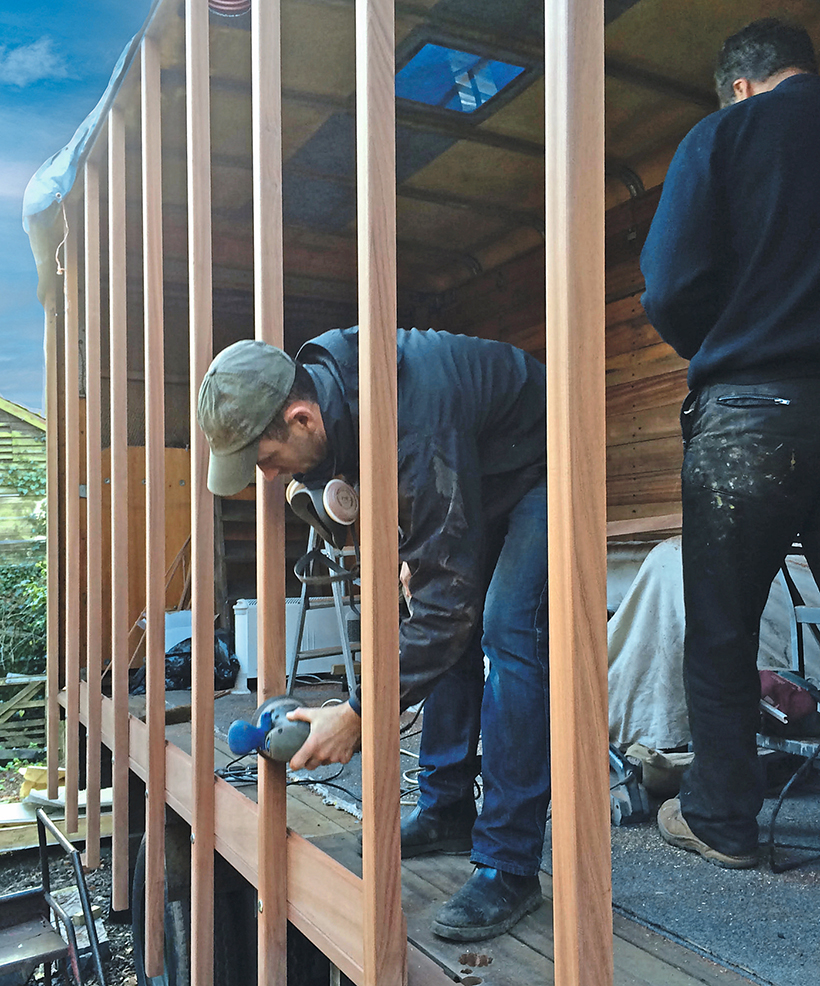
New support woods go in.
Around this time, a dream of a better life somewhere beyond Britain started to manifest itself. The couple had been looking for a more rural solution to their frenetic lives and settled on a location somewhere in France. They found a cheap end-terrace house they liked in the very tranquil village of ‘La Buslière’, near Saint-Cyr-du-Bailleul in Lower Normandy, two and half hours south of the city of Rouen (220 km/137 miles). They quickly found out why the village was so quiet because all the inhabitants had moved out and the village was now empty! Enquiries about other properties proved that the entire village was available to buy so they put together a plan of raising the cash.
All went reasonably well and after a lot of negotiation, they became the proud owners of an entire French village and we mean, a complete village, as they bought the whole thing, lock, stock and barrels for less than the price of a garage in Leeds. Millionaires? No, they paid 26,000 euros + fees for the very run-down ‘maisons, granges et terre’ (houses, barns and land) which made up the old French hamlet. Wow! is the first obvious response, but as the authors of this article we had actually been in a similar life-changing situation and had more than one T-shirt!
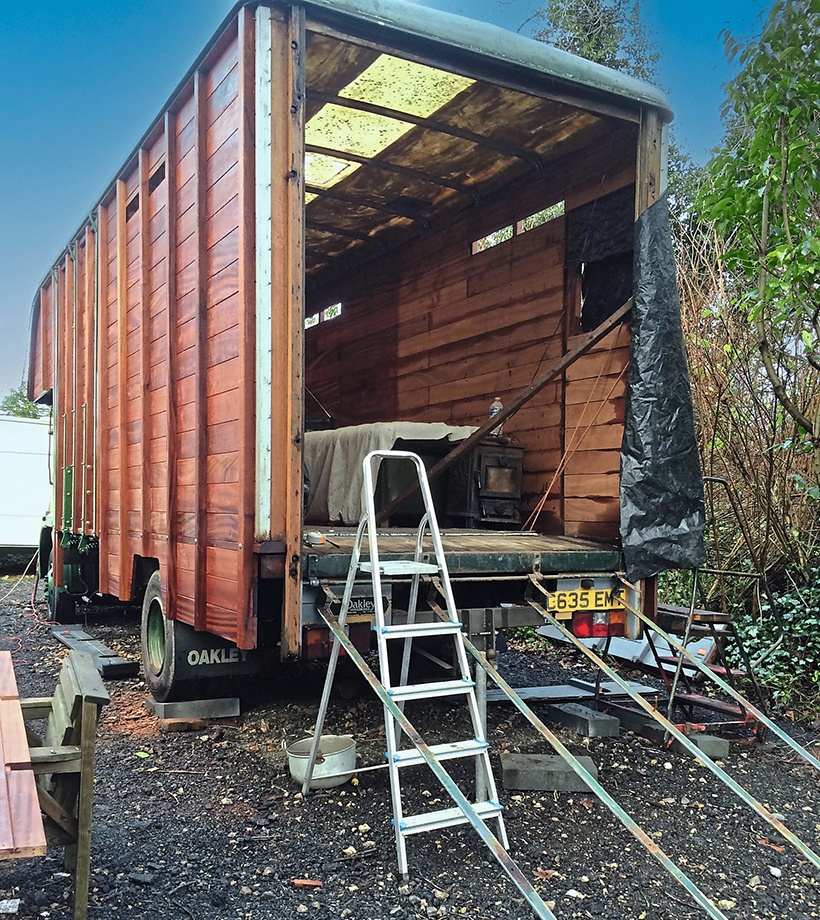
Measuring the new ramp access for the side door.
It is always important to balance the potential cost of undertaking such a huge project to make these buildings into habitable houses. Thirty years ago, when we purchased our ‘pile of stones’ in France, purporting to be a house, it was viable. The council tax was only £40 a year, including refuse services and houses were plentiful and ripe for renovation. Today it is around £600 council tax, an extra £200 for drainage and another £200 for refuse disposal for each dwelling! The ‘houses’ usually suffered from zero maintenance and were often just stones held together with sand, and not a wall with a right angle anywhere, but a Brit with advanced DIY skills could make a sound house for a reasonable price. Now with renovation costs doubling and trebling, what would have been a reasonable budget of £20,000 then, would now rise to £60.000-£70,000. As in the UK, costs and taxes have increased exponentially in France, so the price of labour has trebled at the same time, along with the bureaucracy.
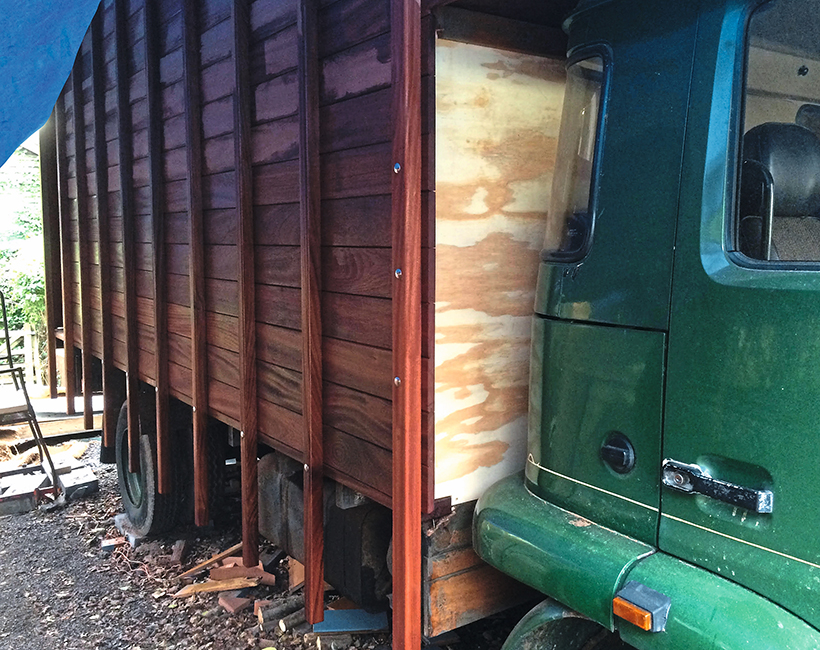
The new side panelling is complete.
Having transported horses around the UK in its 28 years as a horsebox, it seemed fitting to put their smart, little Bedford TL out to pasture somewhere quiet in the country, having taken them around the UK for seven years. Where better than rural France and the future was looking bright for the 1986 TL 330 except ‘Yip’ and Paul were still expecting a days’ work out of it. The idea of creating a ‘Glamping Gîte’ was born, essentially, an upmarket camping experience.
The Bedford was driven down under its own steam as the guys were confident of the mechanics having had the engine reconditioned in 2016. Friend Mark, who just happened to be a cabinet maker by trade, ordered in the Sapele wood for the flooring and machined it down, with ‘Yip’s’ help, into tongue and groove boards then assembled the new body into what it is today, a high-quality living cell. The reconstruction took over two months of intensive work.
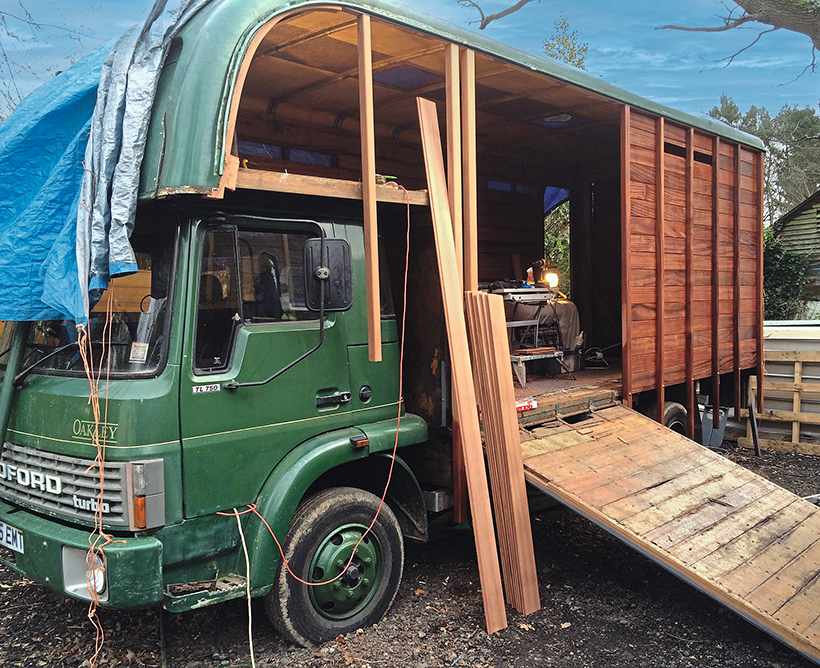
The side ramp is installed but still some way to go.
In the soft rolling landscape of Normandy, David recalls the beginning of their adventure. “We used to avidly watch the TV programme ‘A New Life in the Sun’, and in June 2021, at the end of one of the episodes, there was a message requesting viewers to get in touch if they had just bought multiple properties in Europe. (True North Productions who made the programme had a new show idea on their schedule called, ‘Help! We Bought a Village’). We had only just purchased La Buslière with our life savings and we were painfully aware that five of the cottages needed new roofs and we had no money! We naively thought that if we took part in the show, we would receive some kind of payment which would go some way to pay for our renovations. We were very quickly told that there was no payment for any of the contributors, but we decided to take part anyway for the experience.”

The basic rear ramp structure is tested.
The True North Production team now follow the restoration of their village for screening on Channel 4 and the publicity has made the pair stars of the small screen as they endeavour to rebuild the whole village in their phenomenal DIY project while having television cameras and crew watching their every move. In the last series, narrated by actor Nick Brimble, the couple were tackling their first projects, the bread oven and the forge which dominated the initial programmes aired in November of 2023.
At the start of their new life in July 2021, David and Paul had left the UK with two wagons, the Bedford horsebox and a Mercedes Benz Sprinter with all their worldly goods. David recalls, “Paul drove the Bedford packed to the gunwales with all our goods and chattels and I followed behind in our Sprinter van, jam-packed with all of our garden machinery ready to attack the ‘abandoned-for-30-years’, ivy-covered buildings of La Buslière. We drove from our then home of Tunbridge Wells, Kent to Portsmouth, where we got the 8.15am Brittany ferry to Caen, which would give us only a 90-minute drive to our new and exciting home of La Buslière. Customs at Caen waved Paul and the Bedford straight through but stopped me in the Sprinter and almost pulled it apart.” Not a good start!

Surrounded by gravel the Bedford is almost ready to accept guests.
David continues, “An hour into the journey from Caen, after encountering some very steep hills, we had to pull over and let the brakes cool down on the Bedford as they had almost stopped working! Upon arrival at La Buslière, the first TV camera crew was waiting and filmed us pulling up in the Bedford (as seen in Episode 1 of the show). The cross-channel journey had cost us £605 on the ferry (£325 for the Bedford and £280 for the Sprinter.)”
The vehicles arrived at the village without any further incident, but the idea to set up the horsebox as a ‘glamping’ experience did not blossom until May 2023. Realising that by introducing more accommodation features they could have a worthwhile addition to their income and using inspiration from another tv programme, George Clarke’s Small Spaces they began to add quality features into the box-body to attract an adventurous tourist clientele.

The horsebox space is surrounded around by typical lumps of French building stone.
David added, “Our move wasn’t necessarily prompted by a frenetic life in Kent but primarily because we had never been able to (or dreamed of) owning our own property in the UK and so when this opportunity arose to own our own house and more, for less money than you would need as a deposit in England, it felt like a no-brainer. We had a landscape gardening and property clearance business in the UK which the two of us had built up from scratch over the previous 15 years without any staff, so we were prepared to work hard.
Paul chips in, “We are due to wrap up filming for Series 3 in a couple of weeks and this will be aired on Channel 4 this Summer 2024. The coming season is looking good for the ‘Horsebox Gîte’ but to raise any kind of meaningful funds for the restoration, we really do need one of the cottages up and running for holiday rental. The horsebox only accommodates two people and so revenue gained from this will be limited.”
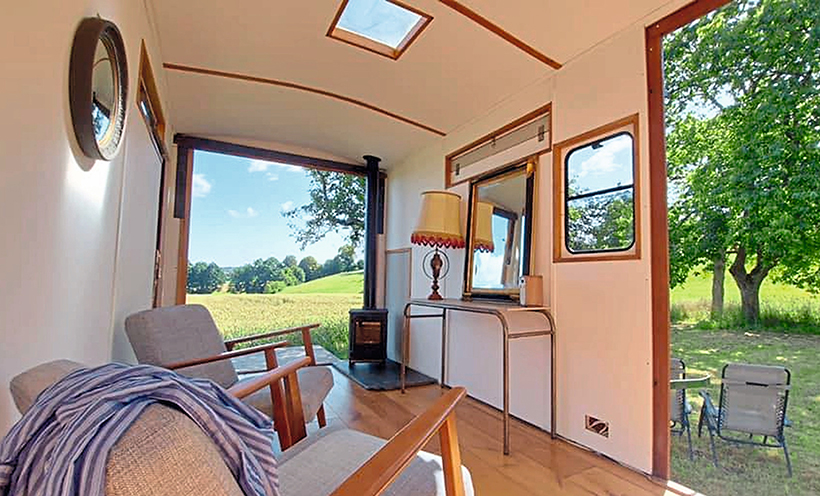
The upmarket living space.
Oakley Coachbuilders Ltd. of Ware, Hertfordshire was the company behind the original horsebox body, and we, the authors, should warn you that if you are a fan of horseboxes or large recreational vehicles, we would really advise not perusing their excellent website, it will just make you drool over your keyboard; some of their six-wheel Scanias are just off the ‘wow’ scale. ‘Stunning’ just doesn’t cover it! (there will be a short pause here as we go to fill in lottery numbers in the impossible hope of winning enough to buy one of these beauties!) Oakley are one of, if not, THE premier builders of horseboxes, big and small and very impressive corporate living wagons. While waiting for the lottery numbers to come up, we looked up the miniature equivalent!
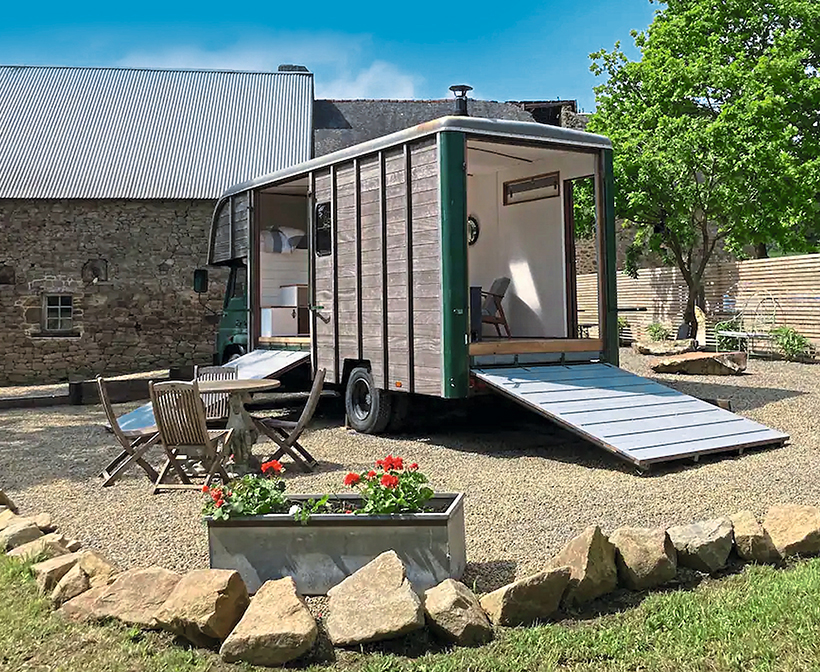
Ramps down and ready for its guests.
The niche model company of Budgie ® is one of the few model companies we could find which made a realistic model of the Bedford TK/TL horsebox. The Bedford model is Budgie ® N° 294 and features a horsebox built by GC Smith Coachworks incorporating two ramps, one at the side and one at the rear, all built on what Budgie ® describes as a standard 5-ton Bedford chassis.
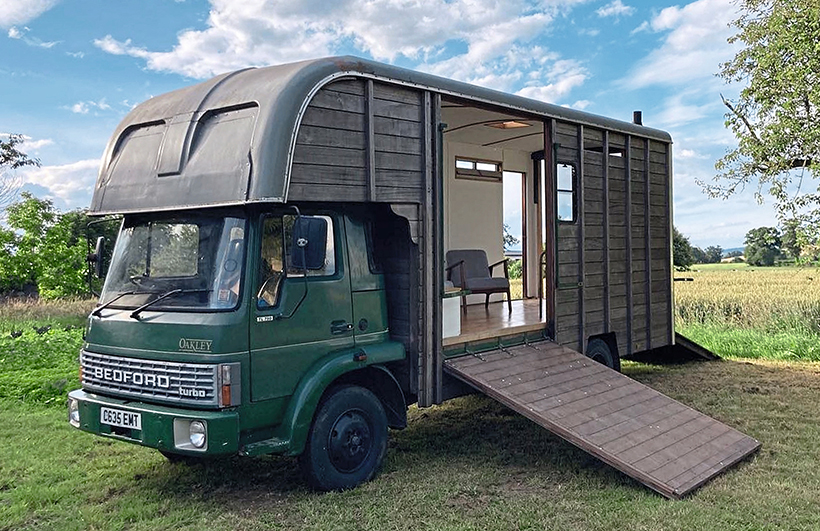
The Bedford is ready to move to its new dedicated spot.
A Budgie ® Internet search, in the aptly-named search engine ‘DuckDuckGo’ and green livery and sporting ‘Newmarket Racing’ transfers. They also changed the horses, provided some bales of hay and a stable lad to look after it all. Oxford Diecast ® also made a 1/76th scale model, marketed by Hornby ® under their Skalemodels brand.
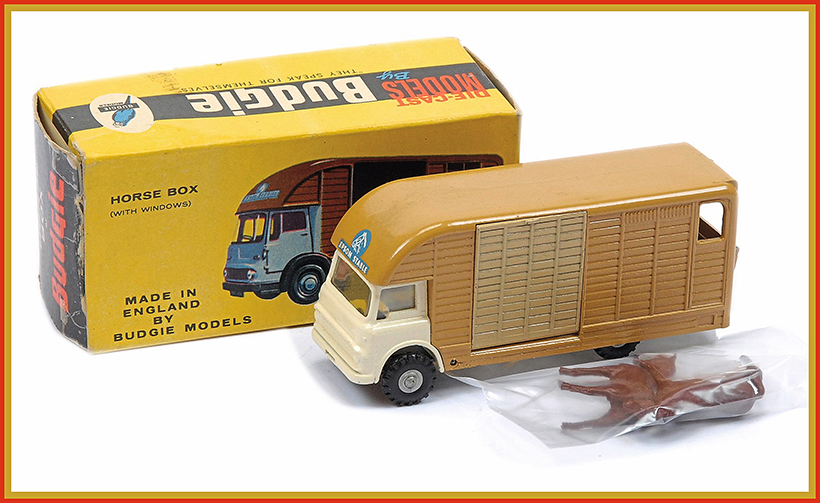
Budgie ® model N° 294, Bedford 5-ton Horsebox. Image courtesy: Vectis Auctions
2024 will be the new season for Yip and Paul and hopefully their restoration of the 1986 Bedford will prove fruitful for them in their new life and it’s another Bedford saved! They have an enormous amount of work in front of them, but they now own a property of their own with a few others for future accommodation. They will experience a decrease in their cost of living, in an interesting country three times the size of the UK and, hopefully, better weather, but now in 2024, with recent environmental laws and more government intervention, which appears to raise regulations for just about everything, it is so much harder. We seriously wish them luck.
You can look at their accommodation at:
https://instagram.com/yipnpaulshelpweboughtavillage
www.airbnb.com/h/yipandpaulsvillagegite
This feature comes from the latest issue of Heritage Commercials, and you can get a money-saving subscription to this magazine simply by clicking HERE
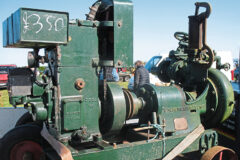
Previous Post
The Cotswold Oil Engine & Preservation Society’s sale
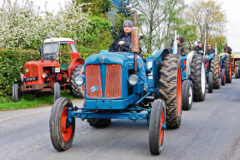
Next Post
The brilliant Drive-it Day at Bodle Street Green



